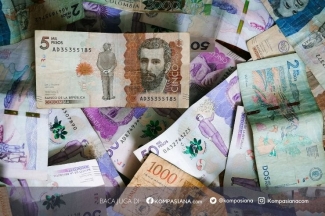The creative industry has become familiar phrase that we always heard in economic reviews today. The great implication of creative industry sector to the economic development of a country has put this sector as a determinant in formulating the economic strategy to compete in global market competition. The creative industry itself is basically defined as a concept that emphasizes the creative potential and human knowledge to drives the economy and development. The concept of the creative industry is not only limited to the economic sector but also involve social and cultural aspects. In creative industry, a creator or a producer makes their products by using creativity which is always connected to arts, culture, and technology development in order to make product’s differentiation. In economic theory, the product’s differentiation of course will bring more profit and bigger opportunities to involve in global market access.,
By seeing the great effects of the economic development and in order to create appropriate strategy to face the ASEAN Economic Community (AEC), Indonesia has to put the creative industry as the priority sector. Indonesian government has to realize that the emerging creative industry sector should be well-prepared and accelerated to compete in the increasing of regional market. Especially in facing the AEC, Indonesia has to prepare creative industry sector as economic buffer.,
In its implementation, the creative industry put the Small Medium Enterprises (SMEs) at the center. SME becomes the center of the creative industry, because most of the entrepreneur and creative people are come from SMEs. In the other hand, as a business group with the largest number in the structure of the business community in Indonesia, ideally SMEs has played a dominant role in economic development. We can see from the role of SMEs in minimazing the number of unemployee, poverty and help to increase the country’s income.
But unfortunately the SMEs sector is currently considered still lack of ability to complete the terms to face the global market. If a large company or corporation is able to effectively participate in the global economy, due to the availability of capital, mastery of advanced technology and information systems, managerial systems are effective and efficient, and well-trained human resources, then it is different from SMEs in Indonesia. SMEs still faced many problems, such as less capital, lack of mastery of technology and information , unskilled labor and poor access to global markets. Even if SMEs can enter the global market, its position is very vulnerable because of the lack of competitiveness.
By considering the urgency of creative industry sector today, one of the preparations that needs attention by the government in facing the AEC is the improvement productivity of the SMEs as the major driver in creative industry. The government should be aware that trade competition become faster and life cycle of goods become shorter. It required innovation and creativity in providing products to follow the pattern of world trade. Therefore, the government should encourage the society, especially the youth, to participate in rising the creative industry sector. The young generations have to equip with spirit of entrepreneurship so they can participate actively in strengthening the economy. By using creativity and knowledge, the entrepreneurs are expected to make product’s differentiation with high quality. So, when the AEC begin in 2015, their products can dominate the market access and compete with others ASEAN country’s products.
Besides that, to encourage the growth of SMEs, the government should provide the good and advanced technology. Other factors that also needed to be developing in order to face market competition are the establishment of business networks through information and communication link.
Nowadays, there are several efforts that have been taken by the government to encourage the development of creative industry sector. In 2009, the governments through Ministry of Tourism and Creative Industry has established 14 subsectors of creative industries that focus on the improvement, include architecture, design, fashion, movie, video, photography, handcrafting, software, music, advertising, game, arts, Tv and radio. As the example from fashion and handcrafting subsector, we could see from t-shirt costum design, hand made shoes and bags with local brand and textile industry where we have our icon “batik” that become our traditional identity. Besides that, from another subsector, creative industry has used advanced technology. Indonesian youth has succeeded creating games like “dreadout” or “pocong jump”, which become happening today. Indonesian youth also has made an animation movie, creative music by combining angklung as traditional music and others music instrument and many improvements in others subsectors. These examples prove us that we have many resources in creative industry sector to compete in AEC 2015.
The government strategy to face the AEC by endorsing the creative industry and empowering the SMEs hoped could strengthening the economic growth. Beside the government role, it also need the active participation from every element of the society, especially the young generation.
resource : http://www.asean.org/archive/5187-10.pdf
Baca konten-konten menarik Kompasiana langsung dari smartphone kamu. Follow channel WhatsApp Kompasiana sekarang di sini: https://whatsapp.com/channel/0029VaYjYaL4Spk7WflFYJ2H
